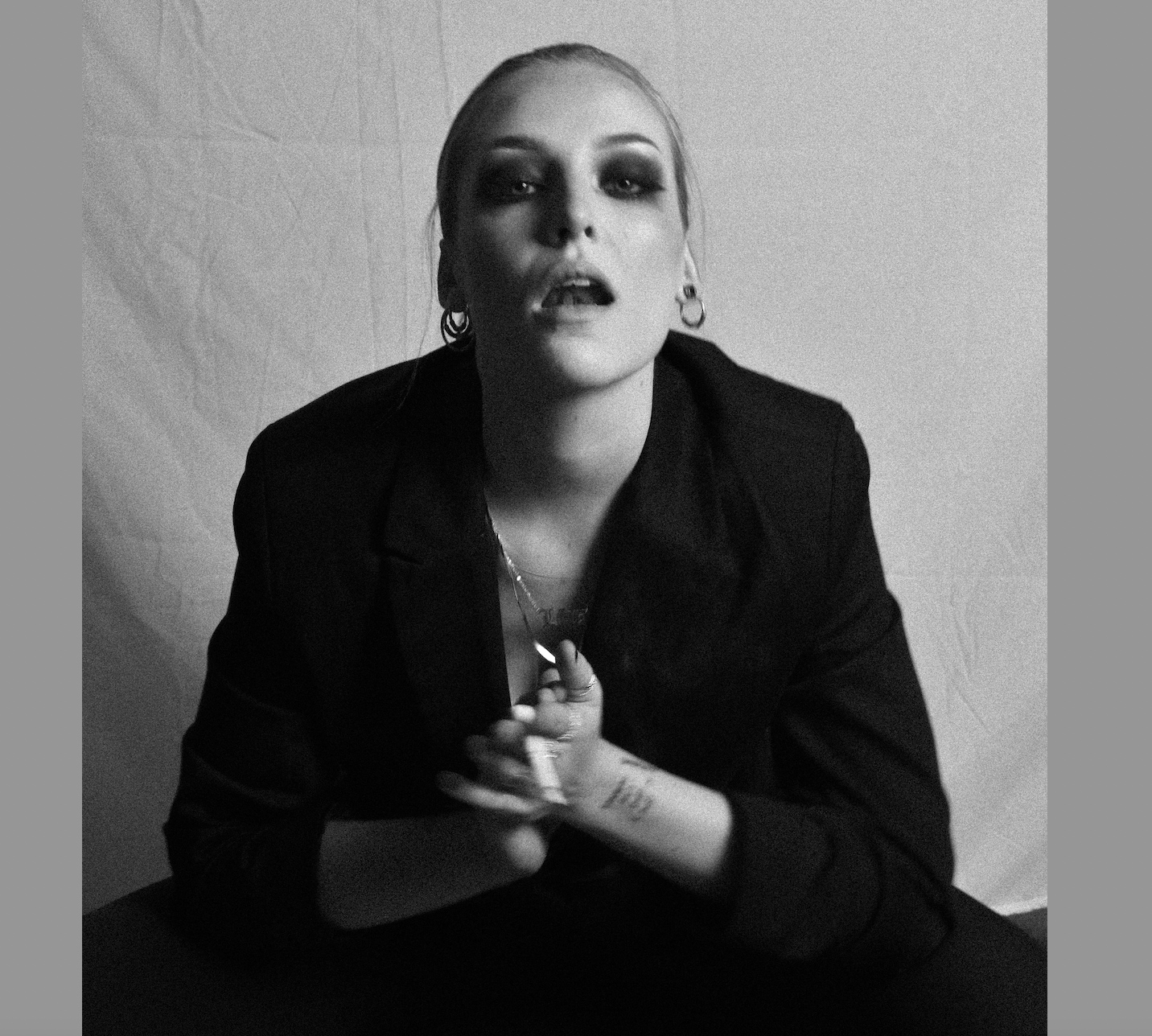London, 2010. Barbara Kruger presents her work The Globe Shrinks, an installation located in the Sprüth Magers art gallery.
An installation that is part of the video art section that the artist guides to consumerism and conceptuality, always linked to an ethnographic term. Twelve minutes in which the viewer questions between the existence of two types of “the self” that the artist exposes through the black screens.
While this event took place in the epicenter of the British capital, the rest of the world was a passive spectator of everything that was happening in the beginning of the second decade of the 2000’s.
Chile rescued its team of thirteen miners, Argentina suffered the death of President Kirchner, Julian Assange uncovered the stormiest scandals for the United States government on WikiLeaks, and Mexico launched military operations to eradicate the high number of murders due to drug trafficking for the first time in its history.
The viewer has always been a recipient of that violence. A violence that, if we go back to previous stages, has sequenced some of the tensest moments in all areas and at extra polar levels.
It is a sequenced violence that we, as spectators, have observed throughout History in a little conscious way due to the violence of the forces of power.
The formula is easy: every strategy has an artifact, and the necessary collateral violence will be used by and for the cause.
It is an introspection between the existence of various entities: the viewer, who is the recipient of what is being shown to gain knowledge of the artist’s point of view, of the bombardment of images to which we are subjected as individuals of a society built based on capitalism, patriarchy, and fascism.
And, on the other hand, we would find the “self”, an entity that can be unfolded in various projections.
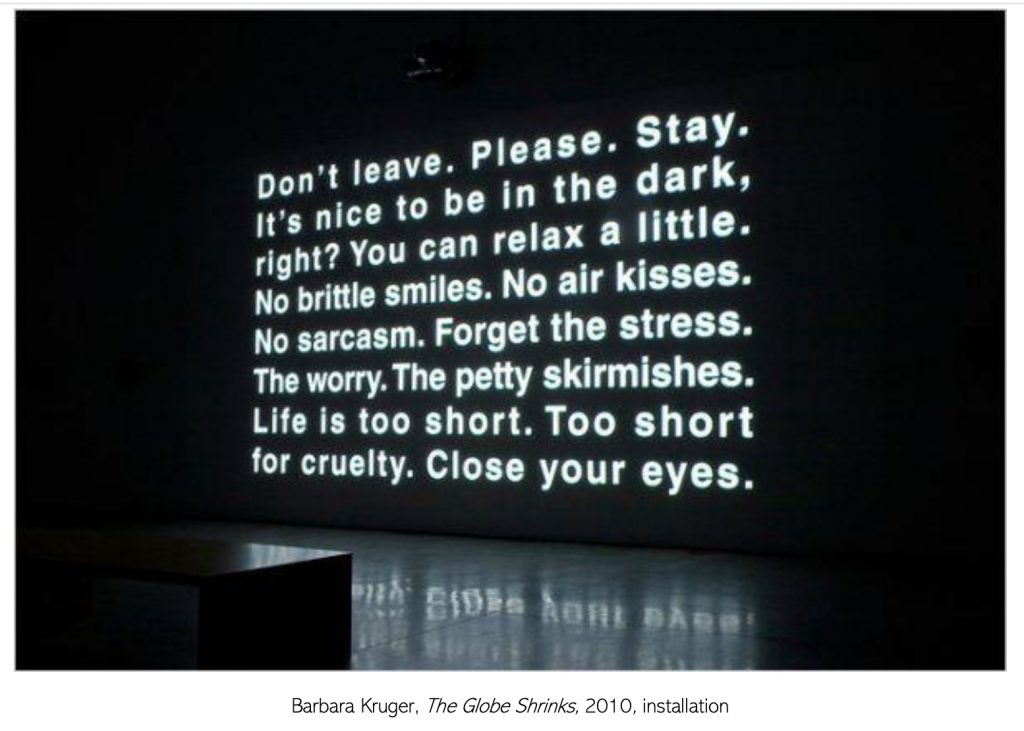
Everything revolves and is built around one or more inert lives in which the events are shown, which that “self” wants the viewer to know, but which in turn should not touch since there should be no contact between the “dome” and that “self”, who would play the role of passive and sleepy spectator who is not able to see beyond what the titans that suffocate this society dictate.
Protection derives directly from violence. And that protection influences the unfolding of the “self” of which we spoke before, creating a bubble, a glass dome that is so fragile that there is no choice but to ignore or look the other way so as not to suffer the consequences of violent acts.
Violence is not something new, it has existed and will exist all our lives, being we the conscious and even the provocateurs of that concept that in most cases turns into both physical and mental violence.
Society is terrified, even scandalized by violence. We are scandalized when viewing these types of events, but at the same time there is a dark part, in which the media, as I have mentioned previously, are participants in a contemporary Roman circus in which we do not want there to be violence, but at the same time we have that need, that curiosity of seeing what is happening no matter how traumatic it may be.
As a society, a characteristic that totally marks us is the fact of committing the same mistake repeatedly. And it so happens that they are violent acts. Nobody forgets World War II, but the rise of fascism is still on in the 21st century. Chance or just human failure?
Then two questions arise in relation to the existing problem: who should we blame for what happened with these acts? Who are really to blame for the existence of this high degree of violence in which we live?
Everyone complains saying “there is too much violence, too much”, but nobody realizes that we, despite being subjected to this fact, are also the cause in a certain way.
It is obvious that the elites are largely to blame, but the problem lies in the fanaticism that leads to the birth of these acts, which mostly affect the weakest in society or those who are different.
That’s when the youngest generations come in. Millennials and Gen Z, even the ones who are in the middle of the two of them, are the final victims of a “chain” of consequences caused by the older generations.
There are a few issues that no one want to talk about, as I’ve said before, and it is because they think they are not important enough. But how aren’t they going to be important if we, the youth, are the ones who must deal with everything that they didn’t want to?
We have to face problems that concern basic things, such as having a decent job, future, and even dealing with the new wave of hate that we’ve been seeing lately even more than before.
At the same time, we have something good, which is the social media, but on the other side, that affects to our mental health way even more because we are exposed to a bunch of information that’s not even possible for a human being to fully process. It is just not possible.
However, sometimes it feels like we are returning to a place where we were supposed to leave behind, and it is happening right in front of us. We struggle with mental health, hiding from what we truly are and all because of fear. We can’t afford to leave our parents’ house because the conditions they offer for a job position are awful and the climate change doesn’t give us any hope at all.
It seems like we are living in a catastrophe that’s not going to get better. We don’t have enough resources to cope with trauma, with life in general. And I’m not saying life is easy. It’s never been, and it will never be, but given the time we live in, we should be able to have a whole lot more access to those resources.
The cases of PTSD, ED, anxiety and depression are at the highest point right now. Being sad is not a “vibe”. Being homeless and barely having enough money to survive the month is not cool. Watching that everyone around your age, the people you grew up with or shared moments at certain point, overdosing or passing away because they do not have access to a proper medical assistance when it comes to therapy, is not a healthy lifestyle.
Older people, such as our parents or even our grandparents, may think that we can get everything way easier, but it is the opposite, as I’ve said before. It’s a hopeless time in which society cares more about the individual than the collective: “If it doesn’t affect me, then it’s not my problem”.
But then we get surprised when we see on the news that a kid, not older than 18 years old, has passed away or has been murdered. We even have the audacity to think that “everything is wrong” when we all are contributing to this.
There’s a gap between generations that is insane. The ones before us worked all their lives to give their children a better future, and then those kids when they grew up, have left us with the biggest economic and environmental crisis ever seen.
What are we supposed to do? What is the youth supposed to do after that? Now, even if you go to college, it doesn’t guarantee your future. Not even getting a higher level of studies, and it is rough to assume.
It’s hard to see how you have to leave your country to find success because they don’t value you. It’s not easy to have a conversation with people telling you after certain time that “they thought you were a bad person” because of the way you look even though you are part of the few ones that got the highest score to go to college. Or even if you don’t have that score, they just think you’re the “evil” just because of your outfit.
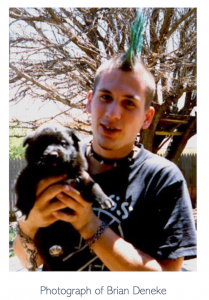
That is the case with Brian Deneke.
1997. Almost in the early 2000s. Brian Deneke, an artist of only 19 years old, is brutally murdered on December 12 by a jock2 with a Cadillac of his parents. He did one of the largest urban art projects in American history as a revulsion towards nuclear weapons that were in Amarillo, Texas.
His methodology, influenced by the punk movement, consisted of writing messages to launch to the population on traffic signs, lying for two kilometers on metal fences in the city of Deneke.
Brian’s intention was to make society rethink its way of life based on these messages, which could be categorized as violent by society itself.
His death was violent, as was the trial for his murder. His murderer was acquitted. He did not even step on the prison floor.
Brian died for being different, for not fitting into the canons that society has always imposed, for not conforming to the role of the typical American boy who is a star, an athlete.
He made works with messages that could be violent for society, but at the same time, he died in a very violent way because of the prejudices of society. A hit and run after this act. So, it happened.
At the trial they said that he deserved to die because violence was palpable in his aesthetics. Because he didn’t fit the canons, as I mentioned earlier. And that for a society is a “threat”, so for society it is better to end “violent” in the same way as its nature: violence.
This event was marked by one of the largest urban art projects in American history, as I mentioned previously: The Dynamite Museum.
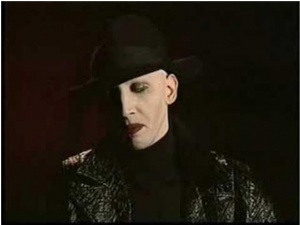
Manson, 2000
Year 2000. Speech on Blame, a conference by the artist Marilyn Manson highlights the questions that society avoids answering.
Society does not want to answer for their actions, no matter how dramatic they are.
The first part of this conference talks about social problems that are in turn very crude and in some way even violent.
Everything revolves around the capacity and degree that they want to impose on us in an almost slave way for a society that is shocked through media morbidity. For this one, it is preferable to make up the most grotesque acts in order not to suffer the consequences of the visualization of those images.
“… I also wondered why nobody cares when an adult commits some sorts of acts of violence. They don’t want to have a reason why. That’s only when a kid does it. ”
Later, he refers to the event that occurred on the night of December 12, 1997, with Brian Deneke. He makes a reflection that leads us to focus our thinking on why society tries to classify things as “violent” based on appearance.
“One story that… It really struck me and got me thinking about this was, a few years ago. There was this teenage punk rocker kid who was ran down by a white jock in dad’s Cadillac.
And this boy died because he looked different. So, this thing happens, this guy kills this kid, and is clearly guilty. His guilt is admitted. And guess where’s this all-American athlete is? He’s in college.
The jury felt the punk rocker deserved to die because he looked the way it did… And not only he was killed, but then, in the trial, he was killed again because they criticized his lifestyle because he didn’t wear a Tommy Hilfiger shirt and khaki pants. And then the killer was even applauded at graduation because he was a football star. The American dream: strong, normal …
He never spent a day in prison.
So, who do we blame? Everybody wants to say “Too much violence, too much violence today” Did everyone forget about the Civil War, the Bible, Shakespeare? Violence isn’t brand-new. That’s why I asked question and put this up. I said: Is adult entertainment killing our children? Or is killing our children entertaining adults?
I think that’s kind of the question we got to ask ourselves today. And yes, ask yourself that every time you watch the hungry cameras at the crime scene, or at the funeral, at the plane crash.
I’m in a square right now. You are looking at me, I’m looking at myself in a monitor. We sit in front of the TV, and we are the TV. We’re a copy staring at a copy. At a copy and a copy …
Eventually it’s a xerox that’s so degenerated… We don’t know which came first. And that’s where we are. That’s what I’d like to leave you with. ”
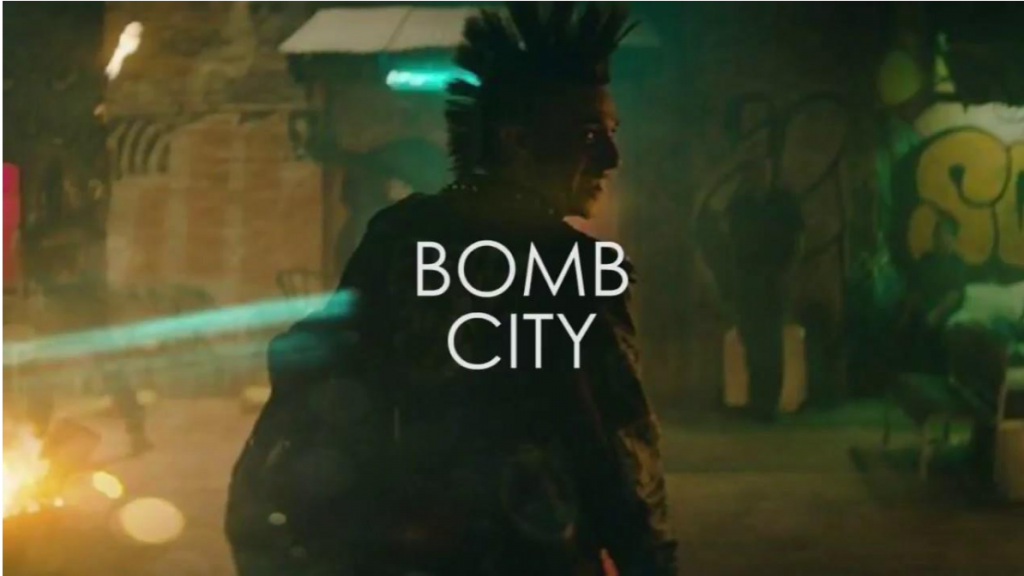
Film | Bomb City (2017)
These stories related to the case of Deneke are explained in the film Bomb City (2017), which narrates everything that happened with Brian.
Another point of view is exposed that, at the same time, has practically the same intention as Deneke’s work and Manson’s speech: to give the viewer that vision, that hidden face of some truly traumatic and heartbreaking events.
There are no limits when it comes to putting pressure on everything that is unconventional. There are red lines that society should not let anyone cross, but anything goes.
Anything goes in a world where the more information and the more disgusting it is, the better.
We ourselves, those of us who have repudiated the cruelty that we have been told throughout our lives, of generations who have seen and felt that violence directly due to events such as the Civil War, or even both World Wars, are the ones who allow let this cruelty continue.
We are the ones who have created and dictated that “anything goes”, no matter how disgusting it may seem. But still, we continue to accept it.
Everybody wants to blame art, movies, songs. Our society is scandalized because a new work by Banksy appears criticizing the fundamental problems of our environment.
The scandal comes from the denial of reality, because we prefer to continue deceived, thinking that, if we do not recognize in some way the violence of society, we will not suffer it and we will continue with our empty lives, wondering every time something terrible happens, what has happened, could go wrong, what has failed.
That media commotion, the social impact that exists when traumatic events occur, is surrounded by crows in search of corpses to feed on in exchange for a handful of dollars or for a minute of fame.
This fateful impact lasts only long enough for the scavengers to start coming out, taking advantage of the violence. And we do not see it wrong. We complain, but deep down we only want to see more and more and more to feed that morbid that I was talking about earlier.
Still, it doesn’t matter how many images we see and whether they are traumatic or scandalous. Instead of raising awareness, it is a visual bombardment that feeds the monster of violence.
We, as artists, are even more aware of everything that happens. We work with the image, with the visual, which we can modify depending on our intention or thought, or even leave it inert due to its own nature.
Our society, as I have mentioned before, is scandalized in a very exaggerated way when a work of art does not conform to the false parameters that exist within the media game. They can show cruelty, we can’t.
According to this, artists must keep our distance in terms of the parameters that separate the artistic from the violent. They do not realize that this is already an act of violence.
It is for this very reason that this fact raises several questions in relation to social scandal and even in part to artists: Is art really a way of being or part of those media that pressure? Or can art really be categorized as a device by which to make a great impact on society?
There is a long list of artists who have used this position to create their works, be it Teresa Margolles, Barbara Kruger herself or Tarantino himself making movies.
The importance resides in the capturing power that exists in the works, in the force that they propagate and in everything that constitutes an artistic artifact of creation.
Can we really take advantage of our position as artists or are we just puppets participating in some way in the propelled violence that exists today?
_____________________________________
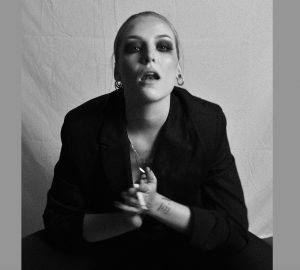 Beatriz Montes Lozano is a visual artist living and working in Madrid, Spain. She is a graduate of Fine Arts, Universidad Complutense de Madrid, Madrid and speaks six languages. Ms. Lozano is the recipient of several Awards including Photographer of the Year, San Diego (Dec 2020), Legendary Award, Paris (Oct 2020 – present), and has been Finalist in several Film Festivals including Swedish Film Awards, Stockholm Film Festival, amongst others.
Beatriz Montes Lozano is a visual artist living and working in Madrid, Spain. She is a graduate of Fine Arts, Universidad Complutense de Madrid, Madrid and speaks six languages. Ms. Lozano is the recipient of several Awards including Photographer of the Year, San Diego (Dec 2020), Legendary Award, Paris (Oct 2020 – present), and has been Finalist in several Film Festivals including Swedish Film Awards, Stockholm Film Festival, amongst others.

